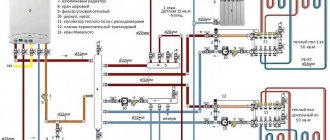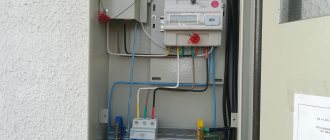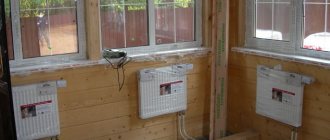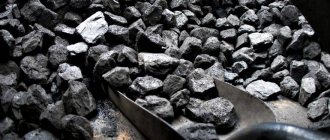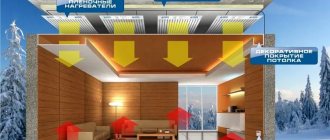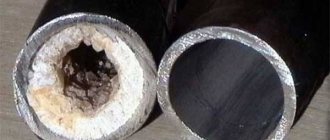If a residential building is located far from the central highway, it can be difficult to ensure the creation of comfortable conditions. When heating with stoves, certain difficulties may arise. It is necessary to have enough fuel available, as well as create conditions for uniform distribution of heat throughout all rooms. In this case, the optimal solution may be electric heating of a private house. It can be implemented using various equipment. It has a number of advantages and disadvantages. Having become familiar with its distinctive features, it will be possible to make decisions about the advisability of using it for heating a specific structure.
Advantages and disadvantages of electric heating in an apartment
Choosing a heating system for a city apartment is a complex and responsible process.
For residents of apartment buildings with central heating, the issue of heating their homes is easily resolved. It's getting cold, so wait for the heating to turn on. That category of citizens who have decided to independently take care of their own comfort is faced with a complex and difficult choice - which type of autonomous heating for an apartment in a multi-storey building to prefer. For the owner of the apartment, it is important that the system is as efficient, safe to use and economical as possible. Of all the types of autonomous home heating that exist today, all of the listed criteria are met by electric heating.
The heating season, which many of us look forward to, no longer depends on a specific date for apartments with electric heating. With the help of electricity, you can achieve an acceptable temperature in your apartment at any time, create the necessary comfort and microclimate.
Electric heaters
*
Modern electric heaters, which are used to heat a home, can do an excellent job of heating a country house. Thanks to the ability to customize the thermostat, you can maintain the desired temperature even if no one lives in the dacha.
Attention: Since some models of electric heaters are equipped with a timer, it is possible to set the desired time for turning them on and off. Modern devices can even be controlled by sending SMS messages. They can be used to both turn the device on and off.
To make your choice easier, you should consider the most popular types of electrical appliances used for heating country houses and find out their advantages and disadvantages.
Heating system installation
It is possible to positively resolve the problem - how to install heating in a private house (the diagram is given above) if you follow certain rules and the sequence of work. Installation work begins with the installation and subsequent piping of the boiler. Gas boilers with a power of up to 60 kW are installed in the kitchen. All rules for installing boilers are described in detail in the instructions for them.
Piping a heating boiler is the process of connecting the necessary equipment.
There are two ways to install a heating circuit from gas and water (metal) pipes - welding and using threaded connections. Of course, you can quickly create a system using the welding method, but it will turn out to be non-separable. By connecting the system pipes with threaded connections, you can easily change the configuration or replace any section of the pipeline at any time. For any installation method, the connection diagram for heating radiators in a private house requires special attention, and it must be drawn and calculated in advance.
Diesel fuel
This case is appropriate if the owner of the dacha no longer has any energy resources at his disposal. This really happens, diesel heating comes to the rescue when there is no gas, the limit on electricity consumption is too small, and transporting firewood is too far or expensive. The cost of the equipment is comparable to gas, as is the efficiency (92%), only connection permits are not required. This is where the positive aspects end, the reason is the price of diesel fuel, the operation of a diesel boiler cannot be called cheap.
To heat a dacha with diesel fuel, in addition to the boiler, you still need the same water heating system and radiators filled with antifreeze. The water heating function is also available if you purchase a dual-circuit heat generator. A warning is appropriate here: it is better to take the unit with a minimum of electronics, which can fail at subzero temperatures.
For those who like to do the heating installation themselves, there is an alternative: a homemade boiler using waste oil. You can make it yourself, spending a minimum of money. The game is worth the candle, provided that such fuel is available to you.
Electric heating of a private house
To some extent, organizing electric heating in a private house is easier than in an apartment. The power consumption limit is much higher; it is possible to control and put in order all the wiring, starting from the power line. From the list above, a water heating system with an electric boiler is most suitable for a cottage. The reason is simple: it is necessary to ensure the use of different energy sources, and not just electricity. This means that you need to select a boiler, install it and install a one- or two-pipe system.
Currently, there are 3 types of household heat sources on the market that are used to provide electric heating for a home:
- heating elements;
- electrode;
- induction
Electrode boilers are cheaper than heating elements, but are not as well equipped. You will have to buy the circulation pump and expansion tank separately and install it yourself. So the installation of the unit as a whole will be more expensive.
Plus, you need to maintain the chemical composition of the coolant so that it contains the amount of salts necessary for the electrode heating process. And one more important point: an electrode boiler cannot operate at half capacity, but only at full capacity.
Temperature control occurs in on/off mode. The purchase and installation of an induction heat generator in a private house will require the highest costs. In terms of piping, it is similar to an electrode boiler, since it only includes a control cabinet with automation. The unit itself is reliable and durable, but has a high price.
Alternative - “warm baseboard”
Warm baseboard
An alternative to water heating can be a radiant panel system, which is installed around the entire perimeter of the room and is called a “warm baseboard.” The thermal energy generated by such a system is distributed along the walls and rises along them. A kind of heat shield is formed that prevents heat loss and moisture condensation.
Warm baseboard
About the working principle
This system is a prefabricated aluminum box. The height of the box is 14 cm, width is 3 cm. “Warm plinth” runs on coolant (it is advisable to use antifreeze) and is installed instead of a regular plinth. In the box itself there is a heat exchanger - a pair of copper tubes on which brass lamellas are strung. The system is connected in the same way as conventional radiators.
Warm baseboard
Warm baseboard
After installation, the “plinth” is connected to the hot water supply and “return”, for which you can use polyethylene or polyvinyl chloride pipes. Each “plinth” can be equipped with a separate thermostat, thanks to which the minimum temperature will be maintained in your absence. This way you will save significantly on electricity.
Electric baseboard
Such a system in combination with an electric boiler is a real godsend for a summer house. “Warm baseboard” is reliable, safe, and will pay for itself in the shortest possible time. Its only disadvantage can be considered its dependence on electricity, the supply of which, as is known, often fails.
Suitable equipment for specific conditions
First of all, it must be said that for each specific case you need to choose the right electric heating system for your dacha. It all depends on how often you visit your country house and for what purposes it was built for you. Let's consider each of the existing situations in more detail.
Rare visit
If you visit your dacha plot extremely rarely, especially in winter, then of course there is no point in installing a capital heating system at your dacha yourself. Here it is recommended to use the connection of electric convectors, fan heaters or oil radiators. Convectors can be wall-mounted, floor-mounted, or installed on casters. Each type of design has its own advantages and disadvantages. We recommend that you immediately familiarize yourself with the tips on choosing an electric convector in order to buy the most suitable model for heating your dacha.
As for fan heaters and oil heaters, they allow you to warm up the room in the shortest possible time, which is exactly what you need for a rare visit to the dacha.
Weekend getaway
If the country house is represented by an insulated capital building, it already makes sense to make better electric heating for the country house yourself. The best solution in this case is a heated floor, which allows you to warm up the room in a short period of time and maintain a certain temperature in the house for as long as needed.
A heated floor alone may not be enough if you decide to install electric heating in a dacha with an area of 100 square meters or more. In this case, it is recommended to supplement the system by connecting infrared heaters that have high efficiency and relatively low energy consumption. A combination of heated floors and IR panels, as shown in the block diagram above, will allow you to quickly and inexpensively warm up a country house for a weekend getaway in winter.
Frequent visit
Well, the last option, which is the least common, is a country house in which the owners spend a significant part of their time. Under such conditions, it is necessary to take care of high-quality heating, and if there is no gas at the dacha, be sure to make electric heating yourself.
It is no longer rational to use equipment with high energy consumption - fan heaters and oil heaters. A more competent solution would be to connect an electric boiler operating together with water radiators.
In addition, it is recommended to connect electric heated floors in the rooms, and, if necessary, install IR ceiling panels controlled by temperature controllers. Such a dacha heating system does not require the installation of a chimney, obtaining various permits and calling a specialist for installation work, which makes it the best if there is no gas on the site.
We immediately recommend watching a video with an overview of a modern electric heating system, which in a short period of time has gained many positive reviews on the Internet:
Video review of an economical heating system for a large country house
Electric boiler for a summer residence - the final choice
Having decided on the brand, the consumer will have to solve another dilemma, namely, answer the question: install a 380V electric heating boiler at the dacha or give preference to a model that operates with a 220V mains voltage? It is worth understanding that the first option requires good wiring that can cope with high loads. Therefore, owners of old country houses with poor wiring should refuse the idea of using a 380V electric heating boiler for heating, the price of which is about $500 for a 6 W model.
Summing up the consideration of the option of heating a dacha using electric boilers, we can highlight a number of nuances.
The advantages of the devices include:
- quiet operation;
- high efficiency;
- no need to obtain permits;
- simple installation and simple operation process.
The disadvantages of devices should also be taken seriously:
- high electricity consumption;
- a solid investment in purchasing a quality boiler from a reliable manufacturer.
Which option is better to avoid?
We talked about cheap and effective systems for economical heating of a private home, but we would also like to point out the most expensive options that should be avoided. The top of the ranking is occupied by oil radiators. They are known to everyone for having high power, so when working in winter you can see a noticeable increase in electricity consumption.
Not only do these products have high power, but their heating efficiency is also very weak. For example, an IR panel of the same dimensions and the same power will make the house warmer faster, so it is better to give preference to it.
In addition, an infrared heater is installed on the ceiling or wall, thereby not occupying free space, which cannot be said about electric radiators.
Another not recommended option is fan heaters. These devices not only burn oxygen, but also “drive away dust” and are also noisy. The effectiveness of their use is not very high, because... between the ceiling and floor, the temperature may differ by several degrees, despite the fact that the power of the products is high (from 1.5 kW).
No. 6. Fan heaters for cottages
A fan heater is another way to backup heating a country house . It is not possible to constantly maintain the required temperature. However, fan heaters have earned great popularity because:
- are inexpensive;
- compact and mobile;
- allow you to quickly warm up the room;
- easy to operate.
Disadvantages include inefficiency, fire hazard, noise and unpleasant odor, since during operation dust and dirt particles get onto the hot coil. You cannot warm up a large area with such a device, but for this there are thermal curtains and heat guns , which work on the same principle as a fan heater.
The device is quite primitive: air masses are heated by contact with a heated heating element, and are moved due to the presence of a fan. The differences are only in the type of heating element (spiral is the cheapest, but dangerous, and ceramic is safe, but expensive), power (0.4-2.5 kW), type of control, and the type and shape of the fan.
Choosing the right system
Depending on the area of the living space and the quality of wall insulation, a suitable option for autonomous electric heating of the apartment is selected. If you are the owner of a one-room or two-room Khrushchev house, a heated floor system in combination with electric convectors or IR panels can cope. Combinations with infrared heaters are more profitable and efficient, because... thermal radiation will be directed from top to bottom and all the heat will circulate in the lower part of the room. Heating an apartment with electric convectors is better only because the devices do not dry the air and do not have a negative impact on human well-being. There are many reviews that IR heaters with constant radiation have a negative effect on health, which is their disadvantage.
You can find other advantages and disadvantages of infrared heaters in the corresponding article. Yet, as statistics show, in 2022 such devices are actively purchased for household use!
As for electric underfloor heating, it is indeed very popular and effective. Anyone can install a heated film floor under a laminate, even an electric kettle. In addition, the material can only be used to make heated paths in the apartment, and not to lay film over the entire floor area. This heating option will have a positive effect on energy savings and at the same time will effectively warm the room.
If you live in a three-room or four-room house, then it would be more reasonable to use the connection of electric water heating in the apartment. This is due to the large total area of the rooms, which will require a full-fledged, powerful heating system. For example, if the area is 130 sq. m., with the calculation of 1 kW/10 sq. m. it will be necessary to install no less than a 13-kilowatt bundle of electric heaters. Of course, in winter you will spend a lot of money on the operation of an individual electric heating system. In addition, to use this option, the wiring must be powerful and able to withstand high current loads. In this case, you cannot do without replacing the electrical wiring in the apartment, which, again, will hit your budget. At the same time, if you use water radiators powered by an electric boiler, the heating will be autonomous and less expensive, which will allow you to “kill two birds with one stone.”
We recommend that you immediately read the article on how to properly connect a boiler to the network with your own hands so that you don’t make mistakes and the system lasts longer!
Alternative sources of electricity
If a country house does not require too much energy, it can be obtained from alternative sources. These include solar collectors: these are systems that allow you to convert solar energy into thermal energy. The collector collects solar heat and transfers it to a coolant, which is water or antifreeze.
It heats the radiators; in addition, you can organize the heating of water in the boiler to provide hot water supply. This system works in full force in regions with a warm climate and a lot of sunny days.
Organizing a reliable and inexpensive heat supply for a country house is not easy, but all the work will pay off in the future with the opportunity to relax in the fresh air in comfort. Although electric heating is one of the most expensive types of heating, it is possible to design a very effective and inexpensive system that will meet all requirements.
Modern radiators and local heating devices will solve the problem at relatively low cost.
Tatiana Polyakova
Author of publications on 1Drevo.ru with the topics: Wooden Euro-windows | Sealing cracks in a log house | Calculation of house construction | Choosing a roof | Two-story houses | Houses made of cylinders | Heating Plan | Electric heating | Frame verandas | House made of timber 7 by 9 | House lining with bricks | Decorating the house outside | Facade insulation and others.
Collections of publications on topics:
Electricity in a wooden house Electricity in a house
Was this publication useful to you?
Bookmark it on social networks!
Total score: 5Votes: 4
Stoves-fireplaces for heating houses with wood for permanent residence
Electric heating of apartments in a residential apartment building
We recommend! — Encyclopedia Wooden Houses — NEW
You can find out detailed and expanded information on the topic of the article from the book “Wooden Houses,” which reflects all stages of building a house, from laying the foundation to installing the roof. Book price = 77 rubles.
You may also be interested in other BOOKS on building houses from wood with your own hands.
We recommend other posts on this topic:
Closed heating system with forced circulation
How to make a solar collector heating system at home yourself
Wood boiler for heating a private house
Electric heating at home: pros and cons
Solar collector for heating a private house
Heating a house with electricity: calculating energy costs
Electric heated floors
The most popular option for electric heating of a private home is based on the use of a heated floor system. Such heating can be organized in any room of the house, even in the bathroom.
Electric heated floors
If desired, you can opt for a “smart” model of electric heated floor. Special sensors and other automation equipment will allow the system to determine the temperature in the room and independently change the power to ensure the most comfortable conditions. Installation of such heating is carried out in several stages.
Electric heated floors
First stage. Thoroughly clean and level the base using a concrete screed.
Second phase. Place insulation and waterproofing material on the dry base.
Third stage. Lay the heated floor structure. There are several modifications. The instructions for the system you choose will provide the optimal installation scheme.
Fourth stage. Install the thermostat and other related elements, and then connect the heated floor to the mentioned electronics. Manufacturers provide recommendations for the placement of all mechanisms, as well as their connection to each other, in the instructions for their products.
Fifth stage. Pour the concrete screed and wait until it dries.
Sixth stage. Apply the selected finishing coat to the dry screed.
Features of choosing pipe material
Until recently, metal was considered the traditional material for creating a heating system pipeline. However, welded steel structures are susceptible to corrosion, so they are replaced with galvanized or stainless steel pipes. Copper pipes, which are capable of operating under significant pressure drops, are considered to be the most reliable. However, all these materials have one significant drawback: significant cost.
Modern metal-plastic pipes are an excellent analogue to metal products. The material does not rust, has sufficient strength and is easy to install. Damage to such pipes is possible only in the event of significant temperature changes.
Features of two-pipe circuit wiring
The two-pipe system comes in several varieties. They have a different connection diagram for heating radiators in a private house, and a different vector of coolant movement.
In small private houses, the following types of two-pipe heating systems are used:
Brief characteristics of two-pipe systems
Dead-end system - the entire pipeline network consists of two arms (branches), one for supply and the other arm for coolant return. The movement of water occurs in counter directions.
Associated two-pipe system - the return arm serves as a continuation of the supply arm (branch), i.e. the system is looped. This heating connection scheme in a private house is deservedly popular.
Collector is the most expensive heating distribution scheme for a private house due to the need to lay pipes to each battery, and their installation is hidden.
Open "gravity" two-pipe system
Let's consider the heating system installed in a private house with our own hands; a two-pipe open circuit was selected and an open tank was installed at the top point of the circuit. The pressure that determines the speed of fluid movement in the “gravity” system depends on the height of the tank. The main advantage of a two-pipe system is that water flows to the radiators at the same temperature, and a clear separation of pipelines into supply and return makes it easier to automate control.
For successful operation of the “gravity” system, a slope of 3-5 mm/m is ensured during installation. Due to gravity, any type of heating system can operate if the necessary conditions are created - the slope of the coolant supply lines for natural circulation. It must be taken into account that the “gravity” system can only work with an open expansion tank.
Closed two-pipe system
When installing steam heating in a private house, the scheme is chosen to be closed, and its type depends on the number of floors of the building. If the house is one-story, then two pipeline branches are laid - supply and return, and heating devices are connected to them in parallel.
And in order to install the heating of a two-story private house with your own hands, the wiring diagrams must contain the required number of liquid supply branches. One branch of the collector should power the batteries on the upper floor, the second branch should power the batteries on the lower floor. The water that has given up its heat returns to the boiler through the “return”. A closed system must have a circulation pump to create pressure.
General information
To prepare an estimate, the following documents are required:
- An exact plan of the premises where the work will be carried out. The wiring diagram must be marked on the plan.
- Customer's project with potential arrangement of electrical equipment. If it is impossible to place certain devices, the contractor will advise the customer on this topic.
- Technical conditions. This document is ordered from your electricity supplier.
- If necessary, permission to connect the circuit to the electrical network.
- Act on the balance sheet of electrical networks. Mandatory for businesses.
Important! The customer himself can provide the materials. In this case, the estimate reflects only the costs of work
In addition to materials, tools and the price of the work itself, the estimate includes:
- Increasing coefficients for certain types of work. Indicated in the Decree of the State Construction Committee dated 04/05/2004 No. 15/1. This may include work at heights, at high temperatures, in operating buildings.
- Overheads. Regulated by MDS 81-33.2004 and MDS 81-25.2001.
- VAT compensation - under a simplified taxation system. Regulated by Letter of the State Construction Committee No. NZ-6292/10 dated October 6, 2003 (For the simplified tax system, leave 20% VAT).
- Estimated profit. You can learn about it from the Letter of the State Construction Committee dated November 18, 2004 No. AP5536/06.
- Transport costs (not always).
- Unexpected expenses.
Important! If amendments are made to the estimate at the initiative of one of the parties, the other party must be notified of this. All changes and adjustments must be documented to avoid disputes in the future.
Options for electric heating of a private house
Such a heating scheme involves the use of various types of equipment.
Boiler application
It is not uncommon to install an electric boiler for heating a 220V home. This device is a budget option and is easy to install.
Electric boilers are of the following types:
The diagram shows the principle of working with heating elements
Electrode model device
Installation of induction device
Selecting IR panels
When determining how to heat a house economically with electricity, you can consider the option of installing infrared structures. Such products do not warm up the air inside the rooms, but various objects. If in the version with a boiler the air masses move upward and then cool, then in this case the hot flows are directed to the floor.
Infrared designs do not take up much space
If you add thermostats to IR devices, they will work more efficiently. One controller is enough to control three heaters. This equipment is economical to use, but expensive in terms of installation and construction costs. IR devices consume a small amount of electricity. In addition, they efficiently distribute heat. They can perform spot and zone heating. Even after the structure is turned off, objects emit heat for a long time.
Infrared panel device
You can install such equipment yourself. The infrared system is used both as the main type of fuel and as an additional one. The advantages of this option include a long service life, up to 80 years.
Heating a house with electricity is also done using infrared heated floors. This is an economical and effective remedy. This design is not afraid of unexpected power surges and does not break due to minor damage. Such a device can be installed under various floor coverings except parquet. Infrared rays only heat solid objects, so when the floor is heated, the elements themselves do not heat up.
Installation of infrared floor covering
Infrared panels for ceilings
Advantages of convectors
When choosing the most economical electric heating without a boiler, it is worth exploring the capabilities of convectors. According to manufacturers, a convector powered by electricity heats the space efficiently and at the same time consumes a small amount of electricity. The main advantage of the device is that its installation is simple.
Convector device
It takes about two minutes to warm up the heating element, which is much faster than when heating with water devices. The advantages of such structures include:
- low cost of equipment;
- fire safety;
- The heating system can not be completed immediately, purchasing additional radiators as needed;
- modern design;
- uninterrupted operation even with sudden voltage changes;
- small sizes.
This method maintains the desired humidity ratio in the room and does not destroy oxygen. Excellent technical properties and excellent power indicators make it possible to use electric convectors for heating both large and small private houses.
Such designs are compact in size and mobile.
The main element of the design is the heating element, which converts electrical energy into thermal energy. The operating principle is air convection. In this case, the cooled flows penetrate the slots in the lower part of the housing and then exit through the upper openings. The convector can operate separately or in a system controlled by a temperature controller.
Wall-mounted models are characterized by functionality and allow you to free up space
Adviсe
The most economical boiler is the one that is equipped with the best automation and complemented by well-selected thermostats
It is important to remember that all promises from manufacturers and sellers about “lower energy consumption” materials, original designs or low power are nothing more than a marketing trap
If infrared heating is selected, one control unit must be installed for every three heating elements. It is better to heat wooden houses using convectors, where a low level of fire hazard is crucial. There is no point in purchasing components for heated floors without automatic control systems.
In order to efficiently heat a house or apartment with electricity, it is worth taking care of careful insulation of the home and the prevention of all kinds of heat leaks. It is the cracks that are invisible from the outside that devalue even relatively powerful heating devices.
The use of complex automation in the heating system is especially important if no one is in the house during the daytime. Controllers and timers that start heating at a precisely specified time allow us to resolve the “eternal dispute” between saving energy resources and comfort
In a house with electric heating, regardless of the type of heating device, there must be a meter with several tariffs. Thanks to it, the payment for the current consumed at night will be significantly less. If you plan to install a boiler that develops a power of 12 kW or more, you will have to re-equip the internal electrical network and install a three-phase meter. Of course, this type of work is not allowed to be carried out without the approval of the energy supplier and regulatory authorities. The basic principles of piping and connecting radiators are the same as for “water” systems.
It must be remembered that boilers running on electricity cannot heat many batteries at the same time. An infrared heater should have a power of 100 W per 1 m2, and if you need several heating devices, a pyrometer will help you make all the calculations as accurately as possible. This mechanism immediately identifies the warmest areas that need heating. We must not forget that, despite the decent level of safety of infrared films and circuits, they still remain electrical appliances.
The basic rules are:
- a certain distance to easily flammable objects, gas cylinders and anything that can explode;
- laying cables in special channels or on top of non-combustible bases;
- inadmissibility of contact of the fastener with the part that directly provides heating;
- placement of ceiling panels at a height of 250 to 350 cm;
- The maximum power of a home or apartment device is limited to 0.6 kW.
Ceiling installation is much more effective than wall installation. But the location of the panels directly above the sleeping area, above the dining area or above the working part of the office cannot be called comfortable. The best solution would be a slight shift to the side. And in order for several units to work synchronously and accurately, they need to be connected to a single thermostat.
Although electric boilers are more common, there are also several important points in their installation. Before installation, you should check that there is no voltage in the network. It is unacceptable to choose a site located next to a water supply, sink, other sources of water and reservoirs. All electric boilers and equipment connected to them must be thoroughly grounded. Although official permission is not necessary, it is still better to order a professional inspection of the house and inspection of the scheme by specialists.
When calculating thermal power, it is worth taking into account the position of windows and floors, the level of glazing, the number of rooms and the quality of their insulation. Experienced owners and professional installers always supplement the electric boiler with a nearby RCD
Watch a video review of electric heating in the country in this video.
Electric convectors and their varieties
Electric convectors and their varieties
No less popular units for electrical heating of a private home are convectors with their many modifications in the form of thermal curtains, “guns” and fan heaters.
Thermal curtains are not used in residential premises. They are usually placed above doorways. When the door is opened, the curtain automatically turns on and prevents cold air from entering the room.
To install, simply mount the device above the doorway and connect it to the network. Depending on the characteristics of a particular design, the order of its connection may have individual characteristics. Therefore, be sure to carefully study the instructions for the curtain you purchased.
Heat guns are also used very rarely in private homes, except for heating basements. They work on an extremely simple principle: the unit is connected to the power supply, the built-in fan begins to pump air, which passes through the built-in heating element and evenly heats the surrounding space. No special installation measures are required; it all comes down to connecting the unit to the network.
Heat guns
Electric fan heaters are usually used as additional heat sources. In small rooms they can be used as the only and main heating. The built-in regulator allows you to easily set the desired fan power and ensure a comfortable microclimate in the room.
Modern models lack the main drawback of their predecessors - fan heaters no longer dry the air. An additional advantage of such heaters is the ease of connection and use - the device is simply placed in a convenient place, connected to the network and set to the required power.
An excellent option for electrical heating is the use of electric oil heaters. They have an attractive design and fit perfectly into the surrounding environment. Typically, such heaters are mounted under a window opening instead of a standard battery, or they are placed on the side of the doorway.
Oil electric heaters
Installation is extremely simple.
First stage. Make marks for installing fasteners. On the body of the oil heater there are special elements with which it will be hung on fasteners. Position the heater body at the installation location and mark these canopies.
Second phase. Drill holes in the wall according to the markings.
Third stage. Attach fasteners to the prepared holes. Typically, hooks for hanging heaters are included in the factory equipment. Otherwise, you will have to purchase these products at a hardware store.
Fourth stage. Connect the electric oil heater to the network and set it to the desired operating mode. Modern models can be equipped with sensors, thanks to which the heating power will be set automatically. If your model can also work in conjunction with such sensors, install them according to the manufacturer's instructions.
Electric household wall heater
Classification of air heating systems according to the method of heating the air.
According to the method of heating the air, air heating systems are:
1. Direct heating air heating systems
In a direct heating air heating system, the air is heated directly by the heater.
The heater can be electric (once again let’s remember our fan heater), it can be gas, like in Goodman, Lennox, Nordyne air heating stoves, or it can also work on another type of fuel. We will return to fuel types later. Those. In an air heating system, air is the primary coolant. 2. Indirect heating air heating systems
In an indirect heating air heating system, air is heated by passing through a heat exchanger from another heat carrier, usually heated water. The heater in this case is separated from the fan and heats the water, which then gives off its heat to the air. Indirect heating air heating systems are more versatile, because any hot water heating boiler can be used to heat water, using any type of fuel - gas, diesel, pellets, etc. In addition, the same boiler can be used for hot water supply and heated floors. Those. no need to buy one boiler for heating, another for hot water, etc. A single boiler, correctly selected in terms of power, is sufficient. Solar collectors or heat pumps can also be used for heating. Thus, in an indirect heating air heating system, the primary coolant is water. And air is a secondary coolant. Indirect air heating systems are generally more efficient than direct heating systems.
In accordance with this classification, the Antares Comfort air heating system is universal - you can install both an electric heater in it (making it a direct heating air heating system) and a water heat exchanger, turning it into an indirect heating air heating system. Or install both, resulting in a universal system. No foreign air heating system has such flexibility.
Advantages of heating with electricity
So, by choosing an electric heating system for your private home, you get a lot of advantages:
- Easy to design and install. It is much easier to organize an electrical system than to gasify a house or build a stove heating system. Legal registration of installation of such a system is many times easier than obtaining a lot of permits for installing a gas boiler or making calculations for the construction of ventilation and solving problems with draft in the furnace.
- Lowest installation costs. If to install a gas boiler you will need to pay for developing a project and calling regulatory authorities, then when installing an electrical system it will be enough to buy a boiler or other equipment, pay the installers once and then enjoy the heat for many years. In addition, you do not need a separate room for the boiler room.
- Electrical systems are easy to use; you just need to set the desired mode or set the required heating system.
- The safety of electric heating is undeniable - it does not produce carbon monoxide; electric boilers do not explode if operating conditions are violated, like gas boilers.
Installing an electric heating system in your private home will undoubtedly be the wisest decision - simple, safe and environmentally friendly.
Pros and cons of heating your home with electricity
Electric heating of a private house has the following advantages:
Simplicity and ease of installation
Self-installation does not require expensive tools or special knowledge. All equipment is small in size and can be installed quickly and at minimal cost.
All devices are easily transported and moved to different rooms. A separate boiler room and chimney are also not required.
Safety
Electrical systems do not produce carbon monoxide, and combustion products are completely absent. No harmful emissions are released even if the system breaks down or is disassembled.
Low initial costs
There is no need to prepare project documentation with the invitation of special services. No permits are needed.
Reliability and quietness
Electric heating does not require regular maintenance by specialists. All installations operate absolutely silently, since the system does not have a fan or circulation pump.
Easy to use
There are no elements in the system that could quickly fail. There is no need to constantly monitor sensors and fuel levels.
System control unit.
High level of efficiency
Allows you to quickly heat a private home even in the most severe frosts. Electric heating is always equipped with a special system that makes it possible to regulate the temperature in each individual room, which can significantly save financial costs during the heating season.
The main advantages of individual electric heating
To understand all the benefits of electric heating, you need to compare it with other existing heating options for a private home. For example, what needs to be done to install a gas heating system? At a minimum, spend a fairly significant amount on purchasing the necessary units and set aside several weeks to go through various authorities and obtain the required permits.
Electric heating does not require any prior permits. You just need to buy equipment, install it yourself or with the help of installers, and connect it to the network. The entire work takes a day, rarely two.
Individual electric heating
Under any circumstances, you will spend less money on purchasing and setting up electric heating than on arranging a boiler room, laying gas pipelines and purchasing a boiler.
Electric heaters do not require a separate boiler room. Warm floors, convectors, fan heaters, infrared heaters - all this is installed in a convenient place, placed under the floor screed or hung on the walls.
Electric heaters do not require a separate boiler room
Gas heating is potentially dangerous. If connected and operated incorrectly, the boiler can poison the residents of the house or even explode
Electric heaters are completely safe, you just need to follow basic precautions
Electrical installations are much more reliable compared to central heating systems. By refusing central heating, the home owner frees himself from not the most profitable and convenient cooperation with utility services.
By refusing central heating, the home owner frees himself from not the most profitable and convenient cooperation with utility services
Electric heating does not force its owner to allocate a separate place for storing fuel and constantly think about the need to regularly replenish fuel supplies.
Electric heating does not force its owner to allocate a separate place for storing fuel and constantly think about the need for regular replenishment of fuel. Electric heating does not force its owner to allocate a separate place for storing fuel and constantly think about the need for regular replenishment of fuel.
The issue of the economic benefits of heating a house using electricity deserves special attention. Previously, it was believed that electric heating was the most expensive option for individual heating. And this statement was absolutely correct. Today the situation has changed dramatically.
- Firstly, the home owner can install a multi-tariff meter. In most regions of the country, electricity is charged differently during the day and at night. Thanks to such a meter, heating costs can be reduced significantly.
- Secondly, the system can be equipped with heat storage batteries. Such devices are connected to the network at night, when electricity is cheapest. When connected to the power grid, the internal elements of such storage devices, made of high-tech magnesite, accumulate heat, and after disconnecting from the network, they release the accumulated electricity into the house.
A compact sensor is responsible for the correct operation of the drive. It also helps regulate the temperature in the rooms and allows you to maintain a comfortable microclimate. The drives are absolutely safe and are sold at a relatively affordable price. You will, of course, have to spend more money on installing a heating system, but all expenses will pay off very quickly, because The devices considered can reduce energy costs by up to 5-7 times.
Combination boilers
Attention: If your cottage is located in a rural area, it is best to install a combination boiler that can be heated not only with electricity, but also with solid fuel. This allows you to significantly reduce the costs of both the equipment itself and its maintenance.
The main advantage of a combination boiler is its versatility, because it can use both electricity and various solid fuels, for example, wood or coal. Thanks to its design, this device is able to maintain the desired temperature for a long time. Including if there is no one at the dacha. In this case, the power of its operation will be minimal.
Its versatility allows you not to worry about possible power outages. After all, if you have a supply of coal or firewood, they can easily replace electricity.
Thanks to their many advantages, combination boilers make it possible to quickly and efficiently heat any country house with electricity or solid fuel, even in extreme cold. In addition, their use allows you to save a lot of money. After all, their operating power may change. Including automatically.
Advantages and disadvantages of the system
Today, the use of electric heaters is becoming increasingly popular. In a wooden house, this option is the most relevant only if there is no gas on the site (there is no main line).
The advantages of electric heating are as follows:
- With the correct location of electric heaters, the efficiency of the system will be many times higher than with a stove or water option (you can clearly see this advantage in the circuit diagram below).
- There are no harmful emissions into the atmosphere (unlike the stove version), and there is no need to install a chimney.
- Ease of installation (for example, you can easily install an electric boiler or IR heater with your own hands).
- A modern approach to control (the use of electronic thermostats and other devices that make the electric heating system in a wooden house fully automatic).
- Repair of an electric heating system occurs extremely rarely, especially if all devices are made by quality manufacturers.
- There is no need to store firewood, coal or other types of fuel.
- Cost-effectiveness of the system (we'll talk about this below).
- The absence of radiators and pipes throughout the room, which has a positive effect on the speed of installation of the system, as well as the interior of all rooms.
- Compactness of electric heaters.
- Electric heating in a wooden house can be used as main or backup.
As for the disadvantages, the main ones are:
- The electrical network supplied to the house can often be turned off for repairs and maintenance (especially in remote areas of the city). No electricity - no heat.
- The need to install a diesel generator, which will allow us to get out of the situation described above for some time. The cost of this unit is quite high.
- Without the use of multi-tariff meters and other devices that save energy, the system will cost you much more than alternative options.
- Electric heaters, especially infrared ones, are fire hazardous devices. There are many requirements for their connection and installation location.
You can see what one of the options for electric heating in a wooden house looks like using a visual example:
Video review of heating a private house with electricity
Reviews: how much money you can save
As for specific numbers, it is difficult to provide accurate information, since the cost of electricity varies in different regions and much depends on additional factors. Let's look at user recommendations that will reduce energy consumption to a minimum:
- Select an induction boiler that matches the power of the heated area. It is not worth taking one that is too weak, or one that is too productive.
- Use all possible automatic temperature control systems to ensure that the equipment does not work in vain. Install thermal heads on radiators to reduce the temperature when necessary.
- For initial heating, use an additional boiler, for example, with wood or diesel fuel. It is not difficult to heat it once, but a lot of energy will be saved. And to maintain heat, you can already turn on the electric boiler, this scheme will save money.
If you use modern, economical equipment, install automatic control systems and an additional boiler for primary heating, you can reduce heating costs by one and a half to two times.
Heating your home with electricity is much easier and safer than using natural gas. It should also be taken into account that the atmosphere is not polluted, a chimney is not needed, which reduces the cost of installation work. And if you use modern technical solutions, you can reduce energy consumption to a minimum. It is advisable to watch a video with recommendations from experts to understand the issue even better.
Infrared heaters
More recently, modern infrared heaters have appeared on our market. Most often they are installed under the ceiling or in the floor; these can be either heating devices or a special infrared film.
Fig.3 Infrared heating
The peculiarity of this type of heating is that it is not the air that is heated, but the objects that are located in the room and the air is heated from them.
This method ensures that this heating is economical and convenient.
Typically, the installation scheme of these devices involves the use of controllers, which allows reducing energy costs by almost 2 times.
The disadvantage of such heating is the high cost of equipment and its installation. If you do not have special skills, you will not be able to install such a system yourself.
How to choose the boiler power and the volume of the heat accumulator
Typically, a buffer tank is installed together with a solid fuel boiler. This reduces the load on the boiler and promotes more uniform heating of the rooms. In addition, residents of the house do not need to constantly monitor the availability of fuel and work around the clock as stokers.
The heat accumulator is effective not only in heating systems with a solid fuel boiler, but also with any other ones - diesel, pellet and electric. By correctly calculating its volume, you can switch completely to cheap nighttime energy.
Two criteria for selecting a heat accumulator are boiler power and heated area. Typically, the boiler power is selected based on the area of the house. For every 10 m², the boiler must generate 1 kW of thermal power with a margin of 20%, that is, to heat a house of 100 sq.m, you will need equipment with a capacity of 12 kW, for 200 sq.m - 24 kW.
The tank volume is selected at the rate of 35-50 liters per 1 kW of boiler power. This means that in the first case the heat accumulator should have a volume of 420-600 liters, in the second - 840-1200 liters. With average insulation of the house, this is quite enough to warm the coolant with night electricity and use this energy during the day for heating.
Reducing the volume is undesirable; it will not give the expected economic effect. Increasing, on the contrary, reduces energy consumption. But here you need to take into account the weight of the water tank, the possibility of installing it indoors and, of course, the cost.
The price of a heat accumulator depends on the volume and material from which it is made. A black steel tank can be bought for 45-110 thousand rubles, a stainless steel tank for 65-210 thousand rubles. Installation and wiring will cost about 25-30 thousand. You can make a heat accumulator with your own hands, it will be much cheaper.
When changing the type of fuel, the tank can be connected to another boiler - classic solid fuel, diesel or pellet. There is no need to change the entire heating system. In order to have hot water supply in addition to heating, combined buffer tanks are produced.
Equipment options
To organize heating you can use:
- Oil and liquid-free electric radiators. They are distinguished by high safety and efficiency indicators.
- Cable and film heating systems in floor coverings. The popularity of underfloor heating has been increasing recently. Different types of heating cables are used to heat the floor. They can be installed directly into a concrete screed or under the floor covering. Installing a heated floor requires theoretical knowledge and work experience. Thin film, mat or heating cable systems differ in installation and connection.
Before installing the heated floor, reliable thermal insulation of the base is done. In each room where underfloor heating is installed, a thermostat is installed to regulate the operation of the electric heating system. Such floors are installed in all rooms or selectively. Most installations are carried out in bathrooms, toilets or kitchens.
Wall convectors are dry and liquid. Dry convectors immediately convert electrical energy into heat. Their main advantage is that they can be turned off for a long time without the threat of defrosting. There are no particular difficulties with the installation of convectors. For each installed convector there is a grounded power socket with a circuit breaker installed in the electrical panel. Liquid convectors are filled with non-freezing liquid or water. After switching off, such a convector still gives off heat to the room for some time.
Infrared heaters heat nearby objects and the floor, and they warm up the air. Their use makes it possible to separately regulate the set temperature in each room. If you have five rooms in your house, you will need five infrared heaters, automatic machines, thermostats and an electrical cable. One of the advantages of this home heating system is the saving of usable space.
Water electric heating has found its wide application for heating private houses. It differs from a gas system or a stove with a water circuit by installing an electric boiler. If the house already has water heating installed, an electric boiler can be installed instead of or in parallel with the old boiler. The disadvantage of such a system is the use of a water circuit.
These systems are used to constantly heat the building. To temporarily heat a house with electricity, use an electric fireplace or fan heater.
Oil batteries
Electric oil batteries resemble conventional water radiators in appearance, but heating of the coolant, in this case the oil located in the metal body of the device, is carried out using electrical energy. Various models of oil heaters are capable of efficiently heating the air in a room with an area of 10 to 25 square meters. They are often floor-mounted and equipped with a number of auxiliary options, such as an operation timer and thermostat.
Features of oil heaters:
- affordable price;
- rather bulky body;
- poor sensitivity of the device due to slow heating of the oil;
- high electricity consumption.


